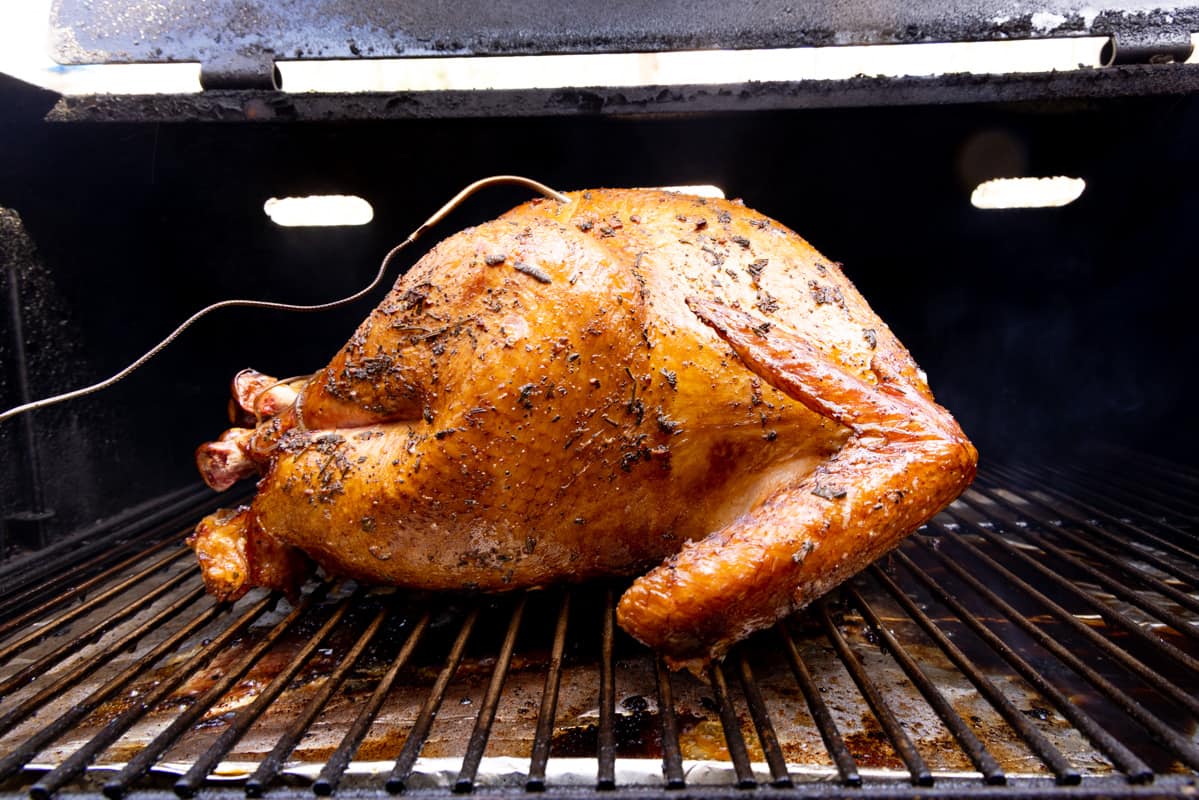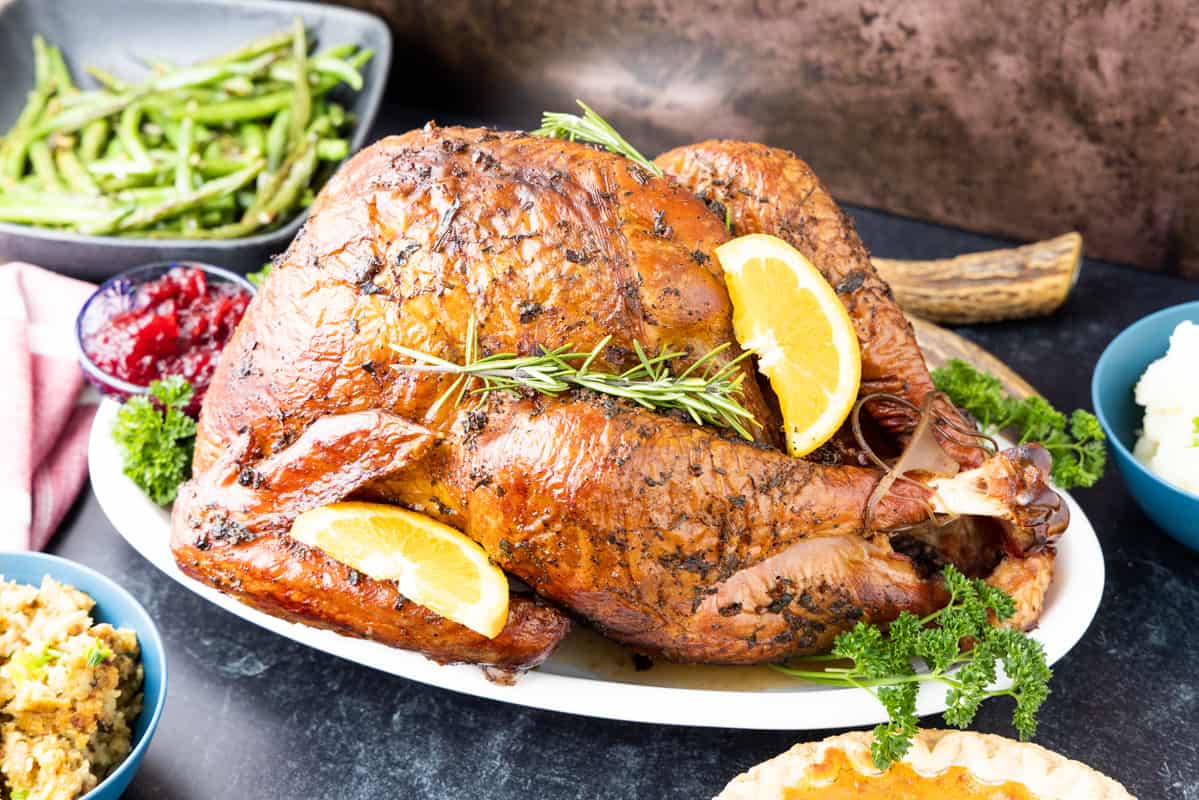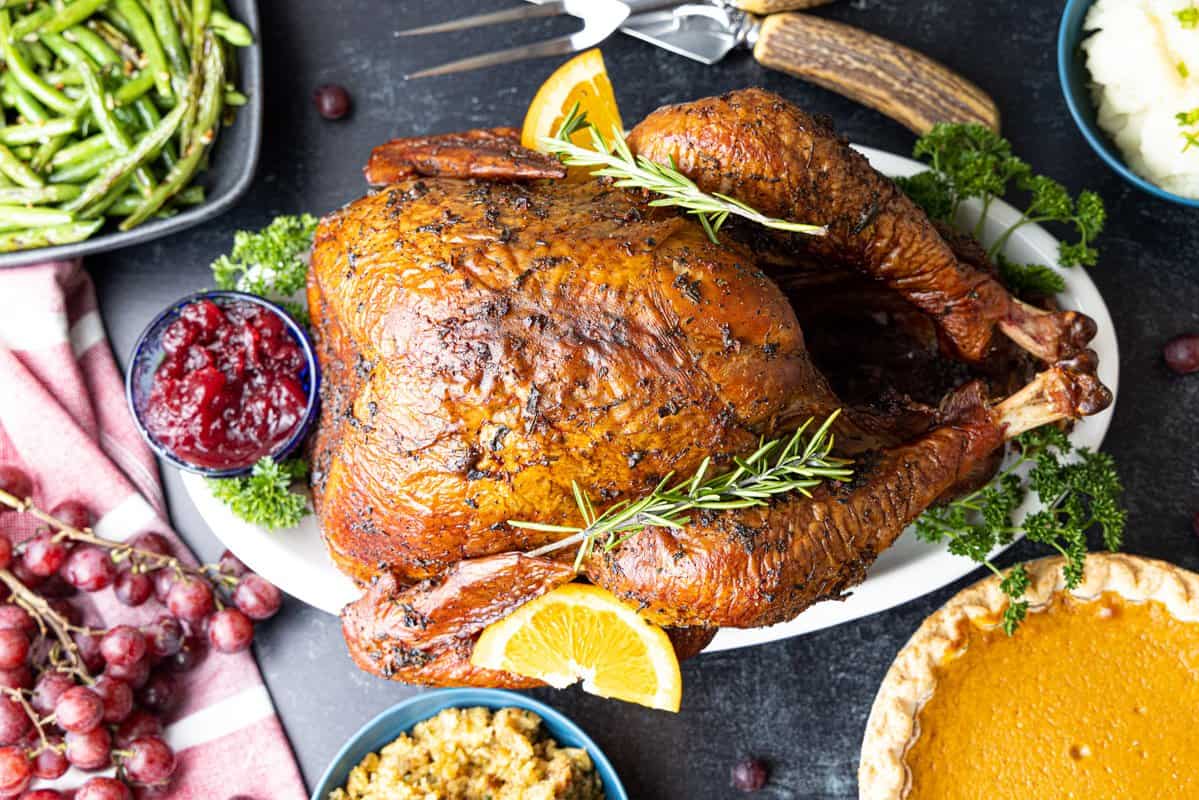Everyone loves a great turkey dinner on Thanksgiving, so make sure you give them the best tasting turkey possible! Oven baked turkey is great, but it doesnt hold a candle to a perfectly smoked turkey.
Smoking a turkey is a time-honored tradition for many families on holidays like Thanksgiving and Christmas. When hot smoking a turkey, one debated technique is whether or not to spray the turkey throughout the smoking process. The answer comes down to your specific goals for texture, flavor, and appearance. Let’s go through the pros and cons of spraying to help you determine if it’s right for your perfect smoked turkey.
The Benefits of Spraying Your Turkey While Smoking
There are a few key benefits to spraying your turkey with a liquid while it smokes
-
Prevents drying out – Spraying introduces extra moisture to the surface of the turkey skin and meat This can help counteract the drying effects of the prolonged smoke exposure
-
Promotes browning – A light coating of oil or broth helps the turkey develop a rich, golden brown exterior. The sugars and proteins in the spray undergo the Maillard reaction for enhanced browning.
-
Adds flavor – Spritzing with juices, vinegars, wines, or seasoned broths infuses extra taste right into the meat. It adds another layer of flavor on top of rubs and marinades.
-
Improves skin texture – Light mists of oil can help crisp up the turkey skin for a crackly texture while retaining moisture below the surface.
-
Provides acidity – Sprays with vinegars or citrus help break down collagen for tender meat. Acidity also balances the richness of the turkey.
-
Easy to apply – Using a spray bottle allows you to quickly mist the turkey’s surface without disturbing the smoker temperature.
Reasons to Avoid Spraying Your Turkey
While spraying has some benefits, there are also a few reasons you may want to refrain:
-
Can cause soggy skin – Excess moisture from spritzing can leave the skin soggy and prevent it from crisping up properly.
-
Dilutes rub and seasoning – Frequent spraying can wash off any flavorful rubs or seasoning blends applied before smoking.
-
Adds unnecessary calories/sodium – Some spray liquids like broth and oil can add extra calories and sodium you may want to avoid.
-
Requires frequent spraying – To be effective sprays need to be applied every 30-60 minutes, requiring more smoker opening.
-
Can alter appearance – Certain sprays can leave an oily sheen or affect the pristine presentation of the smoked turkey.
-
Difficult with hot smoking – The high heat of hot smoking (250°F+) can cause sprays to burn onto the surface.
-
Not needed for brined/injected birds – Turkeys brined or injected with a flavorful liquid don’t need the extra moisture from spritzing.
Best Practices for Spraying Your Smoked Turkey
If you do opt to spray your turkey, follow these tips:
-
Use a light hand – Mist the turkey with a fine spray 2-3 times per hour. Don’t drench the surface.
-
Spray early – Start spraying within the first 1-2 hours once the turkey skin has initially dried.
-
Pat turkey dry – Blot the skin with paper towels after spraying to remove excess liquid.
-
Adjust heat – If spritzing causes soggy skin, increase the smoking temperature at the end to crisp things up.
-
Open smoker minimally – Only open the smoker when needed to keep the temperature steady.
-
Avoid sugary sprays late – Sugary sprays can burn if applied in the last hour when the temperature increases.
-
Consider skip brining – Brining provides enough internal moisture so spraying may not be necessary.
Recommended Liquids for Spraying
If you do want to spritz your turkey, here are some excellent liquid options:
- Chicken or turkey stock
- Diluted apple cider vinegar
- Fruit juices like orange, apple, or pineapple
- Wine or beer
- Melted butter or olive oil
- Herb-infused oils
- Custom oil-based marinades
The choice comes down to your flavor preferences and the impact you want to achieve. Even just a simple spritz of broth helps keeps the turkey moist during smoking.
At the end of the day, spraying your turkey while smoking is optional and comes down to your specific smoking goals. If you want ultimate moisture and flavor, a frequent spritz can help achieve that. But if you prefer perfect crisp skin with an untouched rub, skipping the sprays may be best. Use your discretion and don’t be afraid to test different methods. With the right technique, you’ll have an amazing smoked turkey for the holidays and beyond.

Finish hot & fast
After we smoked the turkey for 3 hours and imparting some great smoke flavor on the bird, its time to crisp up that skin by increasing the smokers temperature to 350 degrees f. Dont bother removing the turkey while increasing the temperature.

Finish cooking the turkey (about another hour) until the internal temperature registers 165°F when checked with an instant read thermometer in the thickest part of the thigh. The turkey breast should also be at least 165°F, but might be a little bit higher.
Once the turkey probes 165°F, remove from the smoker and place on a cutting board. Allow the bird to rest for 10-15 minutes to allow the juices to redistribute throughout the turkey resulting in a tender and moist smoked turkey!

Do NOT cover the turkey with aluminum foil when allowing it to rest. This will undo all the hard work put into making the skin crispy. If covered, the skin WILL become soggy.
Most people already have their favorite side dishes they serve with their Thanksgiving turkey. However, if you are looking for some new side dishes to try which are guaranteed to impress your guests. Give these a try!
You should smoke a turkey for 3 hours and then turn the heat up to 350°F and cook until an internal temperature of 165°F. A total time of about 4 hours.
Not all meat is juicy when cooked low and slow. Poultry is best when cooked hot and fast. So we smoke at a low temperature for several hours while spritzing with chicken broth then turn the heat up to finish it off. This will give it a smoke flavor yet also remain juicy and moist.
Turn the heat up to at least 350°F at the end of smoking. If you cook a turkey low and slow until finished, it will have rubbery skin.
You can baste or spritz with chicken broth while smoking the turkey to help keep it moist as well as help crisp up that skin. The butter of this recipe will really get that skin crisp, so the spritzing is more to keep it from drying out.

DON’T stuff the turkey
Since this turkey is cooked / smoked at a low temperature, the cavity needs to be empty to allow that hot air to circulate through the bird. If its stuffed with dressing/stuffing, this will make the bird cook slower.
We dont want it cooking any slower than we need to at this low temperature because it could prevent the turkey from rising above the danger zone of 40-140°F in the first 3 hours or so.
When poultry is in this temperature zone, it allows bacteria to grow and multiply possibly causing food borne illness.
Now that we have the turkey brined, dried, and seasoned; its time to fire up those smokers and get to the fun part. Smoking the turkey!
If you have tried my smoked whole chicken recipe, you will see the similarities in the cooking methods. Low and slow for some smoke, then hot and fast for a nice crispy skin.
Should I spray turkey while smoking?
FAQ
Do you spritz a turkey while smoking?
What to spray on turkey when smoking?
How do you keep turkey moist when smoking?
How to make turkey skin crispy when smoking?
